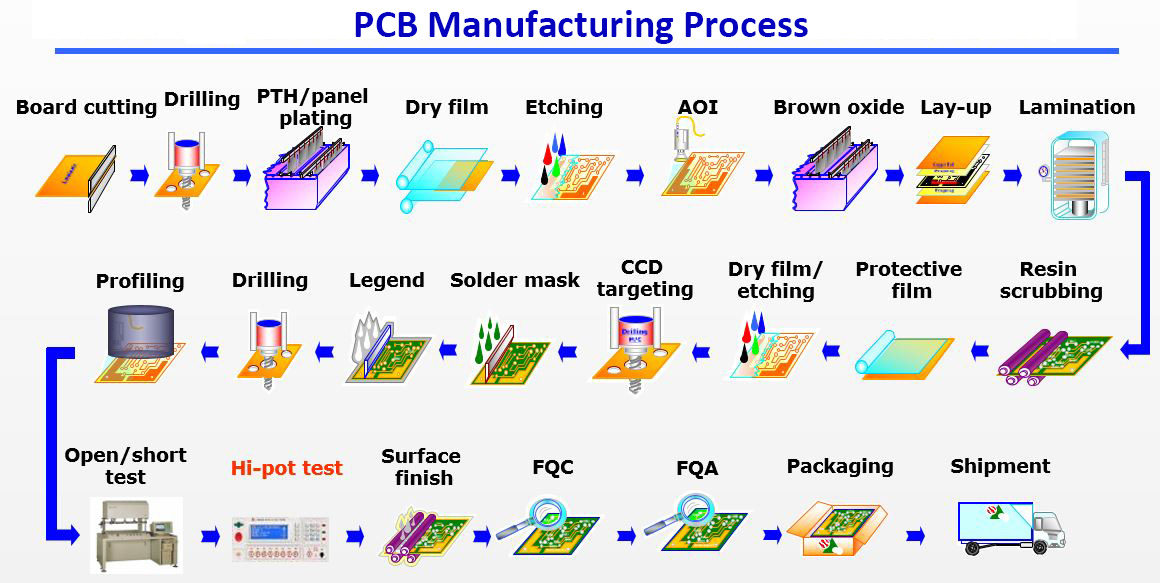
Support Team
Feedback:
support@nextpcb.comIntroduction
PCB boards have now become the main part of the electronic industry. It is considered the main factor in many electronic devices and projects, and different components are assembled on board to make circuits. There are many types of boards, such as single-layer, double-layer, and multiple-layer. Each has its features and design layout and is used for different projects. Multilayer boards come with more than two layers, and their design is an important parameter that needs certain measures to have a good electrical operation and a better signal flow to different components.
There can be different issues, such as signal degradation and noise, that occur if a product is not properly designed or has low-quality materials. A well-structured and accurately configured board comes with accurate functions and signal flow between different layers of the board. Here we will cover different parameters of multilayer boards to get an overview of their importance in industry. Let's get started.
The type of PCB board is called multilayer PCB, which comes with three or more layers of copper foil that have insulation with each other and are configured in a single unit. In this board, the internal layer core exists in the middle of all layers and is coated with a copper layer from both sides and prepreg used as an insulator. In this board, two external layers are single-sided, and the internal layers are double-sided.
All layers of boards are connected through copper-plated holes, and they can have about forty layers. Active and passive components are connected on these boards' top and bottom layers, and inner layers are used for routing. The multilayer board can handle more components, so it is employed in different electrical projects that need 4 to 12 layers. Different applications, like smart devices, need 4 to 8 layers of boards, and in phones, about 12 layers of boards are used. There are even layer configurations made in these boards since odd layers make complicated structures and expensive boards.
In these boards, for example, the EMI operation signal layer must be configured close to planes and use a larger core between the ground and power planes. The close coupling between signal traces and the ground plane minimizes the crosstalk between traces.
A via is an electrical connection between different layers of the board. They are small-sized holes on the board that pass through two or more neighboring layers. Compared to plated-through holes, vias are different. Vias are different since they are used for the electrical connection of through-hole components on board and normally come with a larger dimension than vias.
The via hole is covered with copper to make electrical connections in insulating materials that separate different layers of the board. Based on application needs, boards can need vias that pass through all layers or only the external layer.
There are three main types of vias.
These vias are commonly used to pass through all layers of the board to connect the upper, inner, and lower layers. It comes with larger dimensions than other vias and can be easily made since there is a simple drilling process.
These vias are made from the external layer of the board to the internal layers and do not make holes on the other side of the board. These vias are called blinds since holes cannot be seen at the sides of the board. During the construction of multilayer boards, certain measures are taken to find certain lengths of holes to the required depth. The main purpose of these vias is to make the connection between the external and internal layers of the board.
These vias make connections between two or more internal layers of the board and cannot be seen through any other outer layer. For multilayer boards, the inner plating of buried vias should be completed before the application of two external layers of the board. Buried vais can increase production costs since they need a high level of accuracy in design.

|
|
|
|
|
|
|
|
|
|
|
|
|
|
|
|
|
|
|
|
|
|
|
|
|
|
|
|
|
|
|
|
|
|
|
|
|
|
|
|
|
|
|
|
There are some limitations to these boards, like the fact that you must consider the cost of your project before using a multilayer board. Since these boards are expensive, They are not preferred for short-term projects because their manufacturing time is high compared to other boards. Its repair is also a complicated process compared to single-layer boards.
Multilayer boards are becoming an important and main part of electronics. They also have limitations, like high production costs and design complications, with advantages such as high density and less weight. The features of the board handle complicated circuit design and offer a high-level operation that helps to use them in computers, telecom, medical devices, consumer electronics, the aviation industry, and other wearable technology.
The contact form factor, signal quality, and ability to handle complicated functions make these boards important for different devices and systems. Despite the difficulties involved in these board designs and production, the advantages of functionality, reliability, and high space cover their disadvantages.
- The better the layer stack design, the higher level the PCB design
- Christmas Offer: Get $30 off PCB orders over $100 with NextPCB
- New Special PCB Pricing and Low-Cost Shipping Faster than China Post
- Free PCB Assembly Offer is Now Live: Experience Reliable PCB Assembly from HQ NextPCB
- HQ NextPCB Introduces New PCB Gerber Viewer: HQDFM Online Lite Edition
Still, need help? Contact Us: support@nextpcb.com
Need a PCB or PCBA quote? Quote now
|
Dimensions: (mm) |
|
|
Quantity: (pcs) |
|
|
Layers: 2 |
Thickness: 1.6 mm |
|
|
|